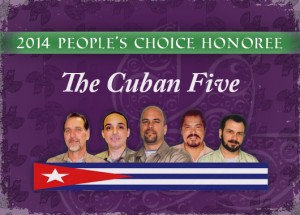 Global Exchange announced the Cuban Five as the winner of the People’s Choice Award in April 2014, in advance of the 12th Annual Human Rights Awards, held May 8 in San Francisco, CA.
Global Exchange announced the Cuban Five as the winner of the People’s Choice Award in April 2014, in advance of the 12th Annual Human Rights Awards, held May 8 in San Francisco, CA.
Gerardo Hernández, Ramón Labañino and Antonio Guerrero – three of the Cuban Five – remain in prison in the United States, and René González and Fernando Gonzales have recently been released, after serving the entirety of their sentences. All have written letters to Global Exchange, expressing appreciation for the Award and awareness raising of their cases.
Just before the event night, we received this email from author Stephen Kimber, who has written about the Cuban Five in his book What Lies Across the Water: The Real Story of the Cuban Five. He said:

Like many of you in this room, I was a latecomer to the story of the Cuban Five, and to the injustices they’ve suffered, and continue to suffer, at the hands of U.S. authorities. This People’s Choice award is an overdue recognition of the importance of their contributions to the cause of human rights. In the face of overwhelming pressure from the authorities, they refused to abandon their principles or one another. By shining a light on their case and their accomplishments, Global Exchange and people’s choice voters have made an important statement in favour of human rights.
We are happy to share the letters below, and hope that, once hearing of the cases of the Cuban Five, you will take action. Support events and actions can be found on the website of the International Committee for the Freedom of the Cuban Five. Most immediately, join the ‘5 Days for the Cuban 5’ in Washington DC, June 4-11, 2014.
The night of the Human Rights Awards, letters of solidarity and wishes were collected to send to the Cuban Five. If you have any words of solidarity to share, please leave them in the comments section.
 Gerardo Hernandez
Gerardo Hernandez
USP Victorville, California
On behalf of the Cuban Five let me first extend our gratitude for being awarded the People’s Choice Award category of your 12th Annual Human Rights Awards. It is an honor for us to accept this from an organization such as yours. We know the amount of effort that Global Exchange has put in over the years in bringing groups from the U.S. to visit Cuba. We feel that the best way to break through all the misconceptions and lies we see daily in the media about our country is to let people experience it by themselves and draw their own conclusions.
This award is especially meaningful to us because it reflects in a certain way the amount of support that we have around the world. Through email, word of mouth, and social media the network of groups and individuals working on the struggle for our freedom were able to rally and make this possible. You gave them the opportunity and we extend a heartfelt thanks to you for that and to all of them in that network who seized the moment and participated. Their continued support is an endless source of encouragement and inspiration to us.
We understand that this award comes with a monetary consideration as well. I have been able to communicate with my four brothers and our families and we all feel that the best way to use this money would be to put it towards the upcoming “5 days for the Cuban 5” in Washington DC June 4-11 being organized by the International Committee for the Freedom of the Cuban 5.
We extend a warm embrace of solidarity to all of you.
 Ramón Labañino Salazar
Ramón Labañino Salazar
F.C.I Ashland, Kentucky
We are profoundly moved and privileged to have received the great honor of such a prestigious award.
It is really an honor that belongs to the Cuban People for their humane efforts to create the better world that we all dream of.
For us five, this effort is also the most important responsibility, the one which we dedicate our life’s work to.
We wish to thank all our sisters and brothers from all the corners of the world who voted for us to win this award.
We will never stop defending human rights, the right for all to live in a peaceful world without wars or terrorism of any kind.
Any monetary retribution that is derived from the award, we wish to turn over completely to the “International Committee for the Freedom of the Five.”
Please receive a warm embrace from the Five, our families and the Cuban People.
Five Embraces.
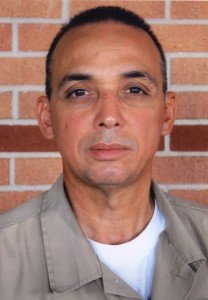 Antonio Guerrero Rodríguez
Antonio Guerrero Rodríguez
Marianna Federal Prison
As words of thanks to Global Exchange, and in the name of my brothers, I send a poem that I wrote on one of those tortuous days after they threw us into solitary confinement cells, known as “the hole,” for seventeen months after our arrest.
I think that these simple verses that I composed as a sonnet, reflect the essence of our heroic Cuban people that stand in solidarity with us and that we try with dignity to represent; also reflected in these verses are the reasons that so many friends from all around the world have supported us and have voted for us for the “People’s Choice Award.”
YO QUIERO
Yo quiero hacer canción de cada día,
en cada corazón descubrir a un hermano,
repartir lo que tengo a cada mano
sin temor a anhelar lo que tenia.
Yo quiero que una lluvia de armonía
penetre en la raíz del ser humano
y que la acción del vil y del profano
se transforme en bondad y en simpatía.
En cada amanecer, que una sonrisa
tenga la magnitud de una montaña
y que un gesto de paz nazca en la brisa
llegando a lo más hondo, nuestra entraña.
Que al germinar mostremos solo amor,
unidos como pétalos de una misma flor.
(Written on June 18, 1999, the birthday of my father.)
We will not fail our people nor our friends. “The homeland is humanity,” José Martí taught us. A better world is possible.
Our most sincere gratitude to Global Exchange, we commit to represent this award with dignity.
We shall overcome!
Five Embraces.
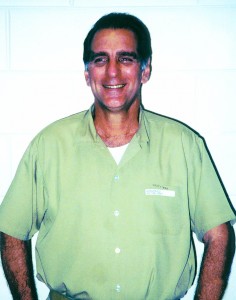 René González Sehwerert
René González Sehwerert
It is an honor to have been recognized with your award of this year. For the Five of us, who have been sent to prison for protecting the most sacred human right –that of preserving people’s lives-, having your recognition is an encouragement and a compromise with justice everywhere.
We also want to acknowledge all of those who first nominated us, and then to thank the hundreds who joined to make our award winning a reality.
That said we can’t forget all of those who were also nominated. Each of them represents a cause. Each of them reminds us that we still have to keep fighting for justice whenever injustice is imposed on a human being. We are called to correct the wrongs and abuses that hinder our aspirations of becoming a really intelligent specie.
To all and each of those of the nominated, some of which have and are fighting for their dignity in the face of abuses that match or surpasses the ones suffered by us, there goes my profound and sincere feelings of admiration, solidarity and support. On behalf of them let’s keep fighting until injustice is swept from the face of the earth.
A big hug to all, with my deep gratitude.
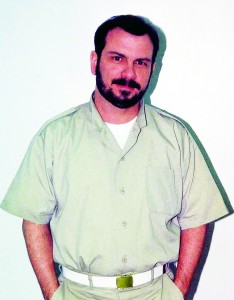 Fernando Gonzalez
Fernando Gonzalez
It is an honor for the five of us to receive the “People’s Choice Award” given by the prestigious, solidarity organization.
The fact that the prize is the result of the votes of individuals from around the world is a testimony to the solidarity regarding the cause of our freedom. It is therefore a recognition of all those who have worked ardently for so long and have contributed their efforts to the struggle to achieve that objective.
We also thank the International Committee for the Freedom for the Five, for having nominated us for the award. Reading the list of the personalities and organizations that have received the “People’s Choice Award” in the past, the honor of us receiving it is multiplied.
I also wish to express my gratitude to Global Exchange for the solidarity we have received for more than 15 years, expressed in diverse ways and exemplified by the correspondence we received in prison and which Gerardo, Ramon and Antonio continue to receive.
Efforts for their freedom continue. We will work tirelessly until it has been achieved, as we know that our friends at Global Exchange will, as well as the various Committees for the Defense of the Five of which so many exist in the United States and in other countries.
The prize, with the support of those who voted for us, is a stimulus for struggle and commitment that fuels our decision to make every possible effort to bring them home.
A big thank you to all the friends whose votes made it possible for us to receive this distinction. Our gratitude goes out to Global Exchange along with our certainty that we will achieve victory.
Thank you.
Global Exchange thanks the International Committee for the Freedom of the Cuban Five for photos and Rebekah Olstad, Leslie Balog and Nelson Enriquez for translation.

 Since then, U.S. Senator Patrick Leahy (D- VT) called for a Congressional Hearing about the Program, which was held this week. USAID issued an official response. Our friends at the
Since then, U.S. Senator Patrick Leahy (D- VT) called for a Congressional Hearing about the Program, which was held this week. USAID issued an official response. Our friends at the  Take Action!
Take Action!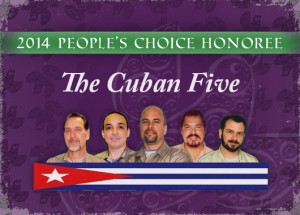 On April 4, 2014, Global Exchange announced the Cuban Five as winners of the
On April 4, 2014, Global Exchange announced the Cuban Five as winners of the 


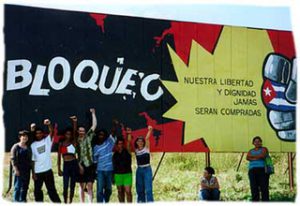

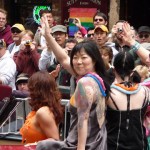
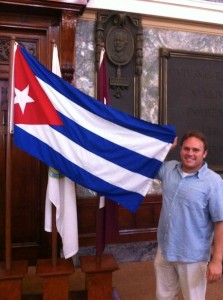


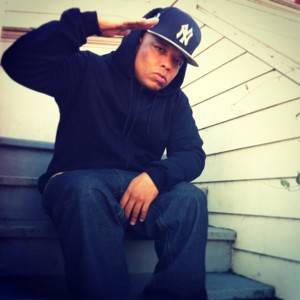

 Help us
Help us 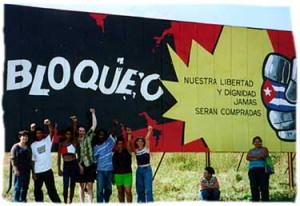 Furthering the
Furthering the 

 Take Action!
Take Action!